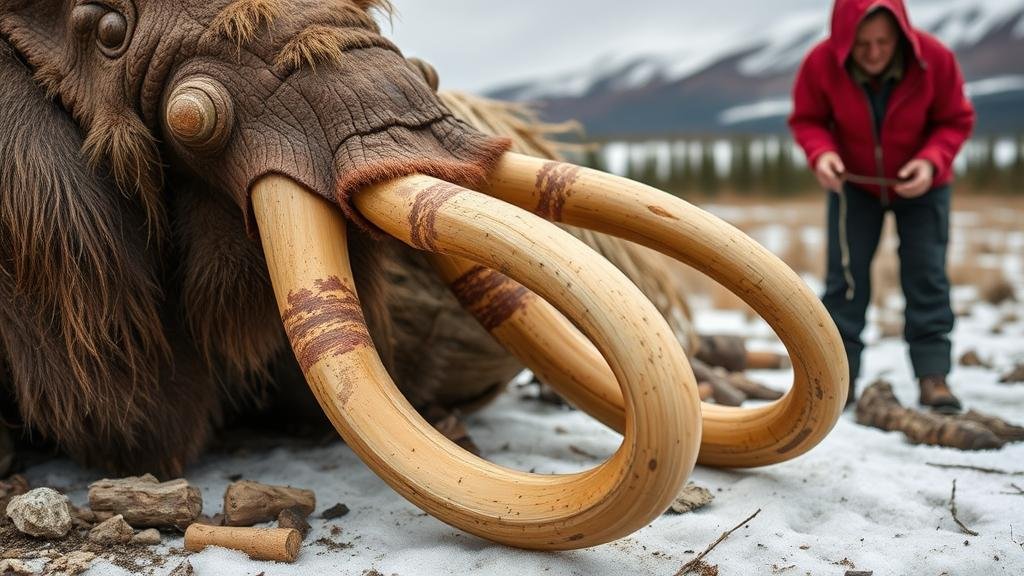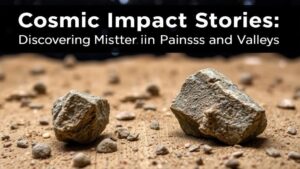Unearthing mammoth tusks from thawing permafrost in Canada’s Yukon territory.
Unearthing Mammoth Tusks from Thawing Permafrost in Canada’s Yukon Territory
The Yukon Territory in Canada, renowned for its rich geological history, is experiencing a unique phenomenon: the thawing of permafrost due to climate change is leading to the discovery of ancient mammoth tusks. For rockhounds and mineral collectors, this unprecedented event offers not just a glimpse into the past but also new opportunities for exploration and collection.
The Scientific Significance of Mammoth Tusks
Mammoth tusks, made primarily of dentin–an organic material similar to bone–can measure up to 15 feet in length. These tusks serve as fascinating evidence of the Earths climatic history and the mammoths’ adaptation to their environment. According to a study published in the journal Nature, mammoths roamed much of the Northern Hemisphere until around 4,000 years ago, during the last ice age. The tusks provide evidence of their diet, social behaviors, and even environmental changes over millennia.
Recent Discoveries in the Yukon
As the permafrost thaws, particularly in areas like the Old Crow Flats, countless mammoth remains have been unearthed, making this a hotspot for fossil and mineral collectors. Recent excavations have led to the discovery of several well-preserved specimens, some dating back over 30,000 years. For example, the Yukon government reported that between 2018 and 2020, nearly 100 mammoth tusks were found, showcasing the regions rich paleontological resources.
How Climate Change is Facilitating These Discoveries
The ongoing effects of climate change are accelerating the thawing of permafrost, releasing ancient species previously entombed in ice. Satellite data from NASA indicates that permafrost across the Arctic is losing its freeze, with average temperatures rising approximately 2.5 degrees Celsius since the late 19th century. This rise is not only impacting ecosystems but also leading to the exposure of significant paleontological artifacts.
What Rockhounds and Collectors Should Know
- Legal Regulations: Before embarking on any collecting expedition, its important to understand the legal framework surrounding fossil collection in the Yukon. Many regions have strict guidelines and protected areas that collectors must respect.
- Best Practices for Collection: If youre lucky enough to come across tusks or other fossils, handle them with care. Use protective gloves and store specimens in a controlled environment to prevent damage.
- Join Local Groups: Consider joining local paleontological associations or rockhound clubs. This can provide you with valuable insights and networking opportunities for future excursions.
Potential Questions and Concerns
As with any fossil collection, you may have questions regarding preservation and best practices. Collectors should be aware that mammoth tusks can be fragile, and exposure to air and moisture can lead to deterioration. Proper cleaning and storage are paramount to maintaining their condition, ideally in a climate-controlled environment. Also, ethical concerns about collecting from these ecosystems should always be considered; responsible collecting not only preserves the site for research purposes but also respects the natural heritage.
Conclusion and Actionable Takeaways
The thawing permafrost of the Yukon Territory presents an extraordinary opportunity for rockhounds and mineral collectors to engage with a rich source of history that has remained hidden for millennia. As you explore this dynamic environment:
- Familiarize yourself with the local laws regarding fossil collection.
- Adopt sustainable collecting practices to protect these ancient treasures.
- Connect with fellow enthusiasts to share knowledge and experiences.
The unearthing of mammoth tusks is not just an opportunity for collection; it is a chance to connect with our planet’s past and engage in the vital conversation about preservation in the face of climate change.



